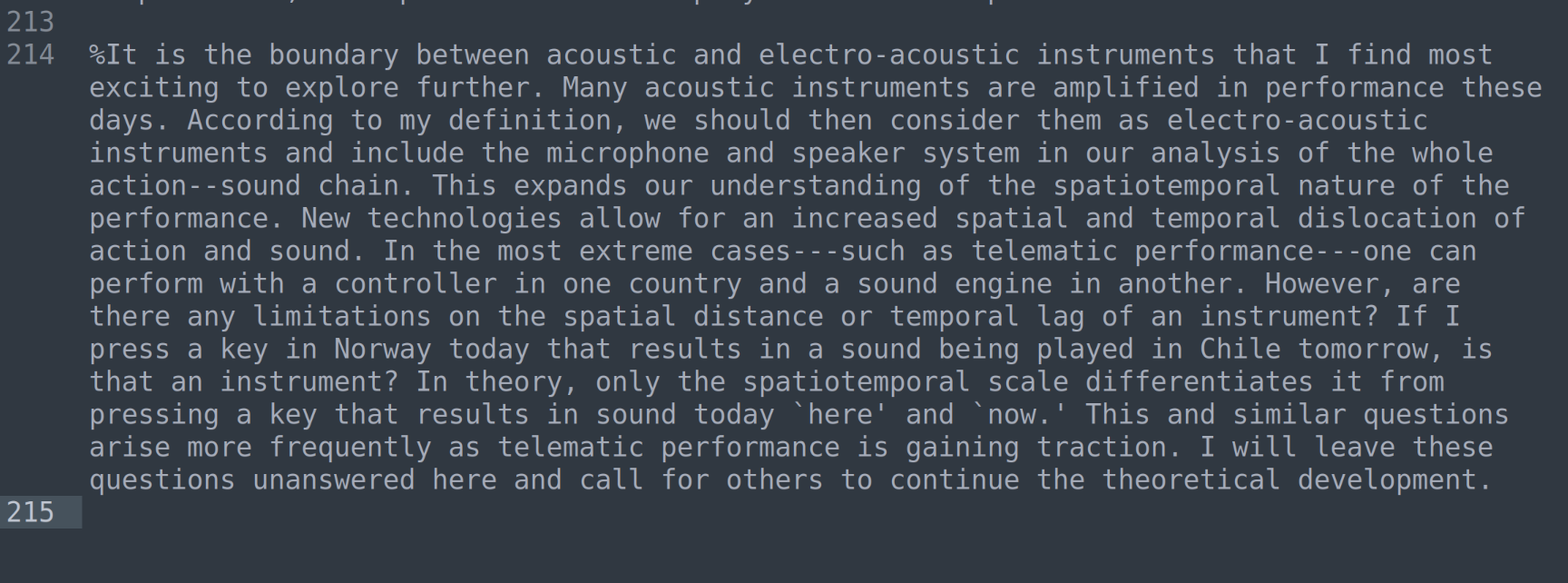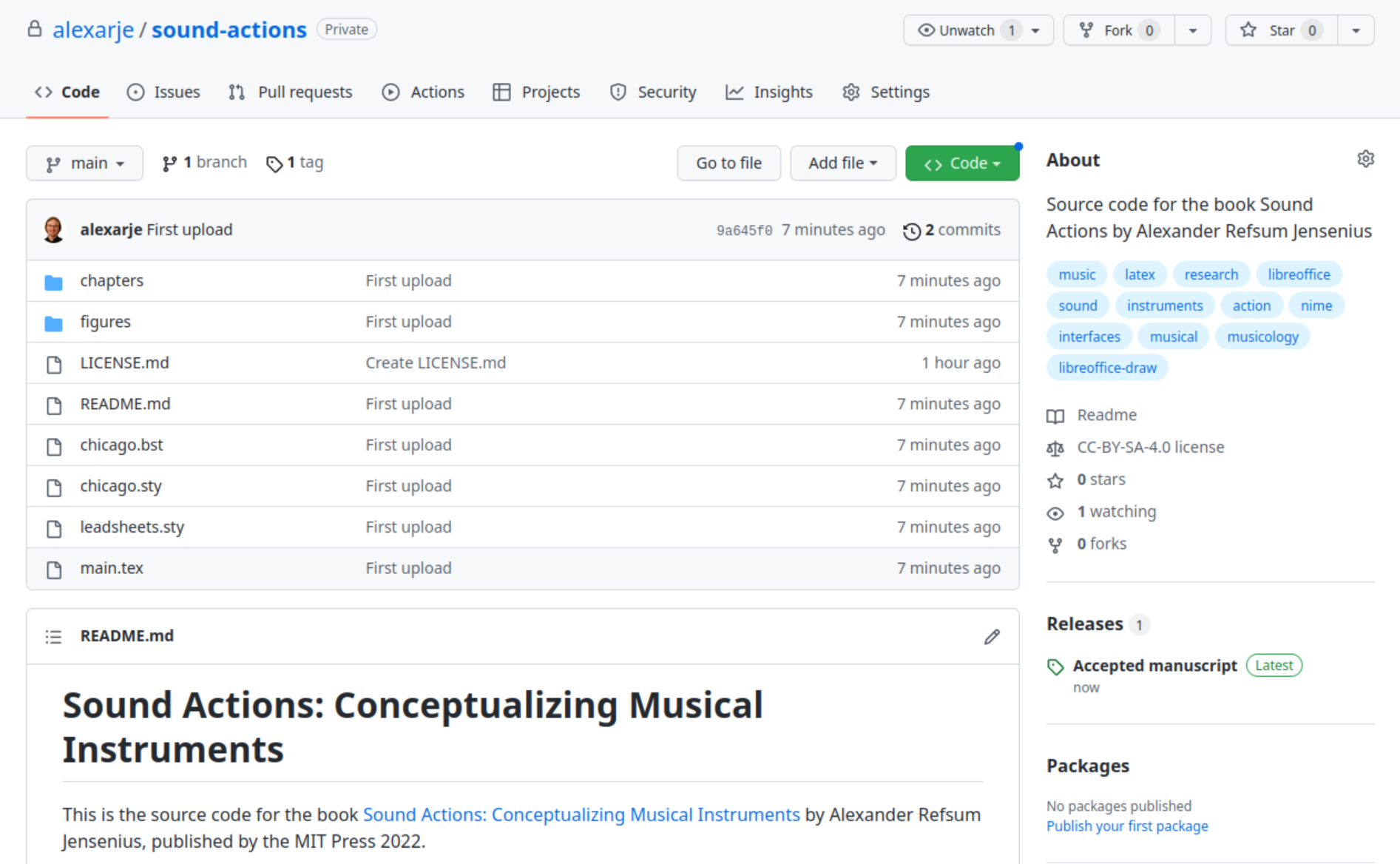Last week, my book was published by the MIT Press, and I am happy to announce that the source code is available on GitHub. Most people are probably mainly interested in the content of the book. If so, you should grab a free copy of the final version. This blog post explains why I have made the source code available.
License
I was fortunate to secure funding from the University of Oslo to make the book freely available, what is often referred to as Open Access. Hopefully, this will be the norm in the future of academic publishing, but it is still a case-by-case decision for books. MIT Press published my book with a CC-BY-NC-ND license. I would have preferred a less restrictive license, such as the CC-BY-SA license, but that is how it is.
Sharing is the right thing to do
As an Open Research advocate, I am interested in exploring how the research process can be fully opened. While the end products of research activities are increasingly becoming freely available, the research process is still often hidden within a “black box”. As a publicly-funded university researcher, teacher, and leader, I feel responsible for pushing for new solutions. Open-sourcing my book is one such attempt at sharing my research process.
Sharing is a development strategy
I have been interested in Open Access publishing for many years. I open-sourced my first book, Musikk og bevegelse, on LeanPub and made the source files of A NIME Reader available on GitHub. I am currently working on two book projects for which I am still discussing with myself about useful sharing strategies. Testing out different platforms and writing strategies is helpful for future writing projects. Unfortunately, there is not one ideal solution. LeanPub provides an excellent end result but is targeted at non-academic writing. PubPub excels at commenting and user interaction. GitHub is suitable for code but not for writing. OSF is an excellent bucket-based solution, but only a little else.
Sharing illustration strategies
The most valuable part of my repository may be how I have made the illustrations for my book. There are lots of simple sketches and drawings that by no means are very fancy but that may still be useful for other researchers. I made all the illustrations in Draw, a part of the LibreOffice package. Draw only has some of the bells and whistles of some more fancy illustration software, such as Inkscape. However, it is easy and intuitive to work with and with enough features for what I need. One nice thing about LibreOffice is that it allows for scripting. So I made a shell script for exporting figures, cropping them to the correct format and exporting them to PDF. This would normally be done with 15 mouse clicks per figure. Now I could convert my entire folder of illustrations at the click of a button. It was only one click away if I wanted to change something for the whole book.
Investigating what is left out
The LaTeX code may be less interesting to look at unless someone cares deeply about what was changed in the copy-editing stage of the production process (perhaps a topic for a linguist out there?). Still, PhD students and others that get into writing longer text in LaTeX may get some inspiration from the way I organized the project.
I think what is most interesting is to look at some of the things I left out of the manuscript. There are only a few comments left; I cleaned up most things before submitting the manuscript to the editor. However, there are a few chunks that have been commented out. Skimming over the text, I found it particularly interesting that I left out a chunk of text in the Spatiotemporality chapter:

I think I left out that part because, at the time of writing, I learned that my new project AMBIENT — Bodily Entrainment to Audiovisual Rhythms was funded. Now I am planning a book project based on that project, and I will develop these ideas into a more substantial text before publishing. In any case, now the seed of that book is already planted in the source code of Sound Actions book.
